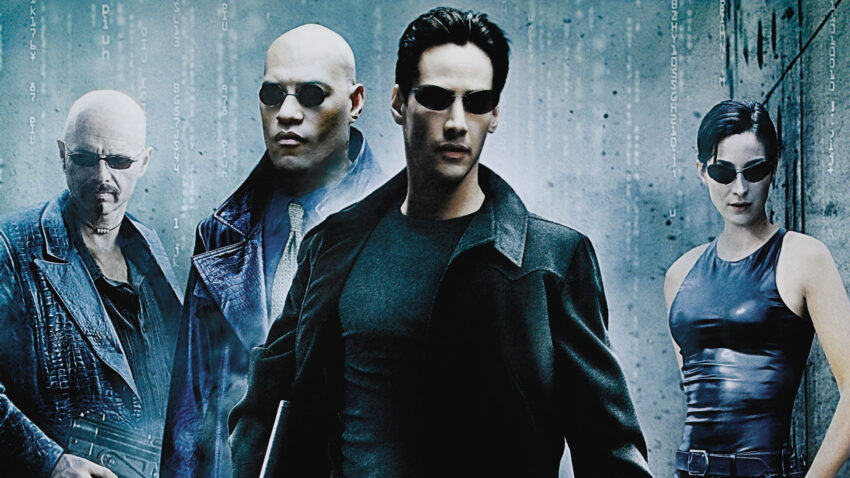There are a lot of unnecessary torture scenes out there. So many of them only exist to show off how dark a characters’ world is and how violent the author is willing to get. Some writers seem to see them almost like a rite of passage — you can take their book seriously because they aren’t afraid of writing about awful, horrifying things.
This, of course, is ridiculous, and if it’s the only reason your torture scene exists, it should be cut. A lot of torture scenes fall into this category. In fact, I used to think all torture scenes were useless. You can torture your captured character emotionally, after all. To me, the very concept of a torture scene was pointless
But as The Matrix demonstrates, not all torture scenes have to be. There’s a lot more to these scenes than showing off how tough you are as an author, and violence in general can serve a valuable purpose in your story, if you use it the right way.
So today we’re exploring that balance, through the futuristic science fiction movie The Matrix.
The Matrix
Neo was living the average life of a computer programmer in the 90’s until one small choice thrusts him into the realization that everything he assumed about his life has been a lie. The world he thought was reality turns out to be a simulation created by an artificially intelligent race to pacify humanity. In the real world, a small band of rebels have escaped the simulation and have one last chance to free the human race and fight back against their nearly-omnipotent opponents, both in the real world and the simulation.
Led by Morpheus, Neo joins the band of rebels with slim odds and not nearly enough numbers. Unbeknownst to them, a traitor is among them, convinced their cause is futile and desperate to return to his cushy life in the simulation. He betrays them, and the rebels barely escape, forced to leave Morpheus behind when he sacrifices himself to protect Neo.
Captured with valuable information, Morpheus is tortured. He refuses to give his captors what they want, because doing so would put an end to the rebellion’s last hope. But then Neo and the rebels arrive to save him. Together, they escape to take their final stand against the artificial intelligence in one last, desperate gamble to save all of humanity.
Writing With Violence
I don’t know if you noticed, but not much came of Morpheus’s torture scene. The writers could have just as easily cut it, jumped into the rescue, and moved on with the story. In a lot of cases, this is what should happen. Violence for violence’s sake doesn’t improve a story. You don’t need gory scenes or violent situations to show how dark your world is or even how evil your villain is — just look at Dolores Umbridge. As one of the most universally hated, diabolically evil characters in all of fiction, she never used grotesque violence on her enemies. The pain she inflicted was far more petty, and yet she never appeared as anything less than a truly corrupt antagonist.
Your villain can be just as hated, just as evil, without you having to write long, painful paragraphs of description to get that point across.
So when should you write that?
In Morpheus’s case, this torture scene worked because it showed the strength of his character. Even in the midst of incredible pain, fighting a hopeless battle with no prospect of rescue, he clung to his determination not to give in and destroy the rebellion’s last chance for success — as slim as it was. The viewer walked away not filled with terror of the villains they already knew would stop at nothing to end the rebellion, but instead with a new admiration for a character who had proved his strength.
All stories wrestle with some sort of darkness — even if that darkness is simple or familiar. But every dark or evil element in your story should only exist to the extent that it shows the goodness of something else.
In Morpheus’s case, a torture scene was the best way to demonstrate his courage and determination. Torturing him emotionally by having him waffle between two choices or agonize over his situation would have completely changed his character. In this case, there was no way to show the strength of his character as well as a torture scene would.
If you’re just including torture, gore, or violence to show the evil of your villains, your readers are going to be able to sense how shallow that purpose is and feel as though the scene or element is unnecessary. There are better ways to show how evil your villain is. Whether or not your reader can articulate that truth, it will ultimately shine through in your writing in a way that well-thought out, thoroughly intentional elements of darkness won’t.
But if the darkness you’re including is intentional, with the specific purpose of upholding the beautiful elements of your story, don’t back down from writing it into your book. If the pain, the torture, or the violence you include serves to highlight the power of goodness — whether that goodness is found in the strength of your character’s integrity or something else — you don’t have to question it.
The real world is messy, dark, and often violent. Good art reflects life, which means writing realistic stories often involves writing about the cruel realities of living in a broken world. Yet without those painful aspects to life, we’d miss the value of the goodness that perseveres in spite of it. Truly good stories call us to remember that fact, and yours can, too.



Let us know:
What stories have you seen use darkness to highlight goodness? What movies have done that poorly?


Hi! My name is Mara, and I’m a Christian artist, violinist, and blogger. I remember the day that I decided that I would learn something new about what makes a good story from every book I picked up — whether it was good, bad, or a mixture of both. I use this blog as a way of sharing some of the tips and tricks I’ve learned, and highlight which books, cartoons, and movies have taught me the most about writing an awesome story.


I think The Wingfeather Saga did this: used evil to highlight the good. For example, when Janner was in the fork factory, he went through all sorts of bad things, but that only made his friendship with Sara all the more poignant and beautiful. Is this sort of what you mean?
Absolutely! And I loved that you used an example that isn’t violent — showing this idea can be also be applied to hardship that isn’t gory. So yes, that’s exactly what I meant!